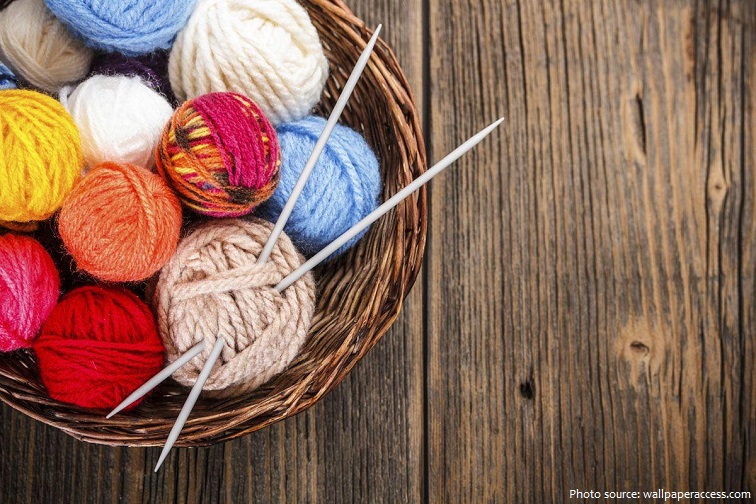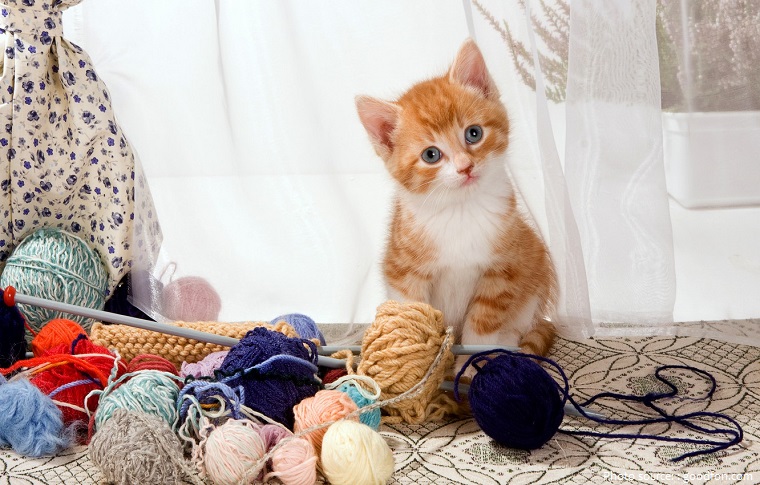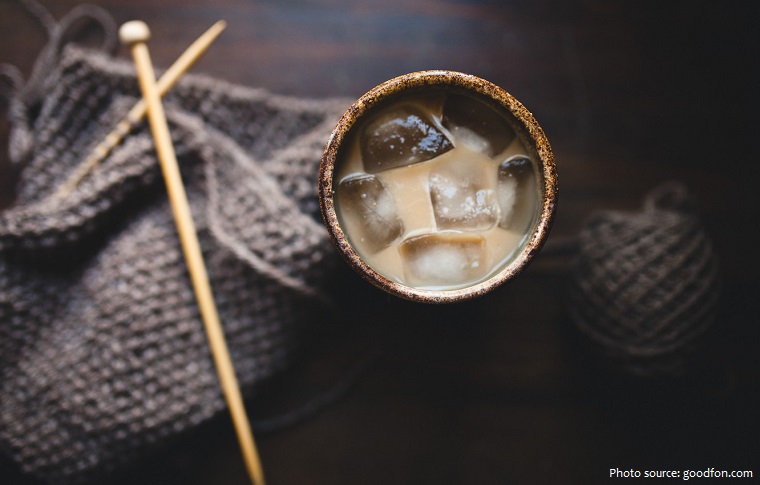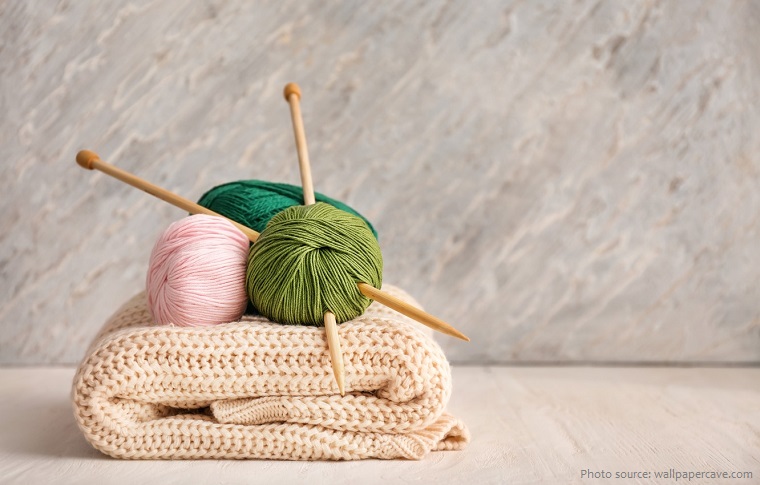
Knitting is a production of fabric by employing a continuous yarn or set of yarns to form a series of interlocking loops.
This craft has been used by many in creating fabrics and garments such as socks, sweaters, scarves, hats, and dresses.
Knit fabrics can generally be stretched to a greater degree than woven types.
The two basic types of knits are the weft, or filling knits—including plain, rib, purl, pattern, and double knits—and the warp knits—including tricot, raschel, and milanese.

In knitting, a wale is a column of loops running lengthwise, corresponding to the warp of woven fabric – a course is a crosswise row of loops, corresponding to the filling.
The word “knitting” is derived from knot, thought to originate from the Dutch verb knutten, which is similar to the Old English cnyttan, “to knot”. Its origins lie in the basic human need for clothing for protection against the elements. More recently, hand knitting has become less a necessary skill and more a hobby.
The earliest use of the word “knit” noted in the Oxford English Dictionary dates back to the 15th century.
The oldest knitted artifacts are socks from Egypt, dating from the 11th century. They are a very fine gauge, done with complex colourwork and some have a short row heel, which necessitates the purl stitch. These complexities suggest that knitting is even older than the archeological record can prove.

Most histories of knitting place its origin somewhere in the Middle East, and from there it spread to Europe by Mediterranean trade routes and later to the Americas with European colonisation.
The earliest known knitted items in Europe were made by Muslim knitters employed by Spanish Christian royal families. Their high level of knitting skill can be seen in several items found in the tombs in the Abbey of Santa María la Real de Las Huelgas, a royal monastery, near Burgos, Spain. Among them are the knitted cushion covers and gloves found in the tomb of Prince Fernando de la Cerda, who died in 1275. The silk cushion cover was knitted at approximately 20 stitches per inch. It included knitted patterns reflecting the family armoury, as well as the Arabic word baraka (“blessings”) in stylized Kufic script. Numerous other knitted garments and accessories, also dating from the mid-13th century, have been found in cathedral treasuries in Spain.
Several paintings were made in the 1350’s that portray Mary, the mother of Jesus, while she was knitting. It was called The Knitting Madonnas. One of these paintings is Madonna of Humility by Ambrogio Lorenzetti, showing Mary seated on the floor, knitting. Aside from letting the history know the existence of knitting in the 13th century, this also depicts the rise of knitting as a home activity for women.

The first commercial knitting guilds appear in Western Europe in the early 15th century (Tournai in 1429, Barcelona in 1496). The Guild of Saint Fiacre was founded in Paris in 1527 but the archives mention an organization (not necessarily a guild) of knitters from 1268. The occupation: “cap knitter” describes Margaret Yeo, of London, in 1473.
The stocking frame or the mechanical knitting machine was invented in 1589 by William Lee, an English clergyman. After receiving a pair of black stockings from William, Queen Elizabeth I ultimately declined to
grant him a patent for his invention. She complained that his machine-made wool stockings were far too coarse for royal ankles. She didn’t like the feel of the stockings or their crude form and she was afraid that the machine would take away jobs from her people. However, France’s King Henri IV saw the opportunity William’s invention provided and offered him financial support. The inventor moved to Rouen where he built a stocking factory. Before long, the French spread the knitting loom throughout Europe. When the device came back to Great Britain, the Worshipful Company of Framework Knitters was incorporated in 1657 in London. Framework knitting was predominantly performed at home, often with the entire family participating.

In the 15th century the first knitted shirts or tunics were produced on the English Channel islands of Guernsey and Jersey – hence the English name jersey. The knitted garments were made by the wives of fishermen and sailors from natural wool, which, by retaining its oil, protected against the cold even when damp.
The stocking frame or the mechanical knitting machine was invented in 1589 by William Lee, an English clergyman. After receiving a pair of black stockings from William, Queen Elizabeth I ultimately declined to grant him a patent for his invention.
During World War I, men, women, and children knitted large quantities of clothing and accessories to help the war effort on the Allied side, supplementing the troop’s uniforms with socks, hats, scarves, sweaters,
mufflers, and balaclavas. Knitting and women’s magazines along with the Red Cross published pamphlets and patterns specifically for sailors and troops. Popular magazines and songs treated knitting as a craze that had swept over Britain in the effort to support the military forces.

The largest aluminum circular knitting needles on record are size US 150 and are nearly 7 feet tall. They are owned by Paradise Fibers and are currently on display in the Paradise Fibers retail showroom.
The current holder of the Guinness World Record for Knitting with the Largest Knitting Needles is Julia Hopson of Penzance in Cornwall. Julia knitted a square of ten stitches and ten rows in stockinette stitch using knitting needles that were 6.5 centimeters (2½”) in diameter and 3.5 meters (11’6″) long.
In the 2000s, a practice called knitting graffiti, guerilla knitting, or yarn bombing—the use of knitted or crocheted cloth to modify and beautify one’s (usually outdoor) surroundings—emerged in the U.S. and spread worldwide.
The finest recorded knitting is a piece of 2,464 stitches per 6.45 cm² (1 in²), made by Douglas Milne of Mount Florida, Glasgow, UK in May 1969.